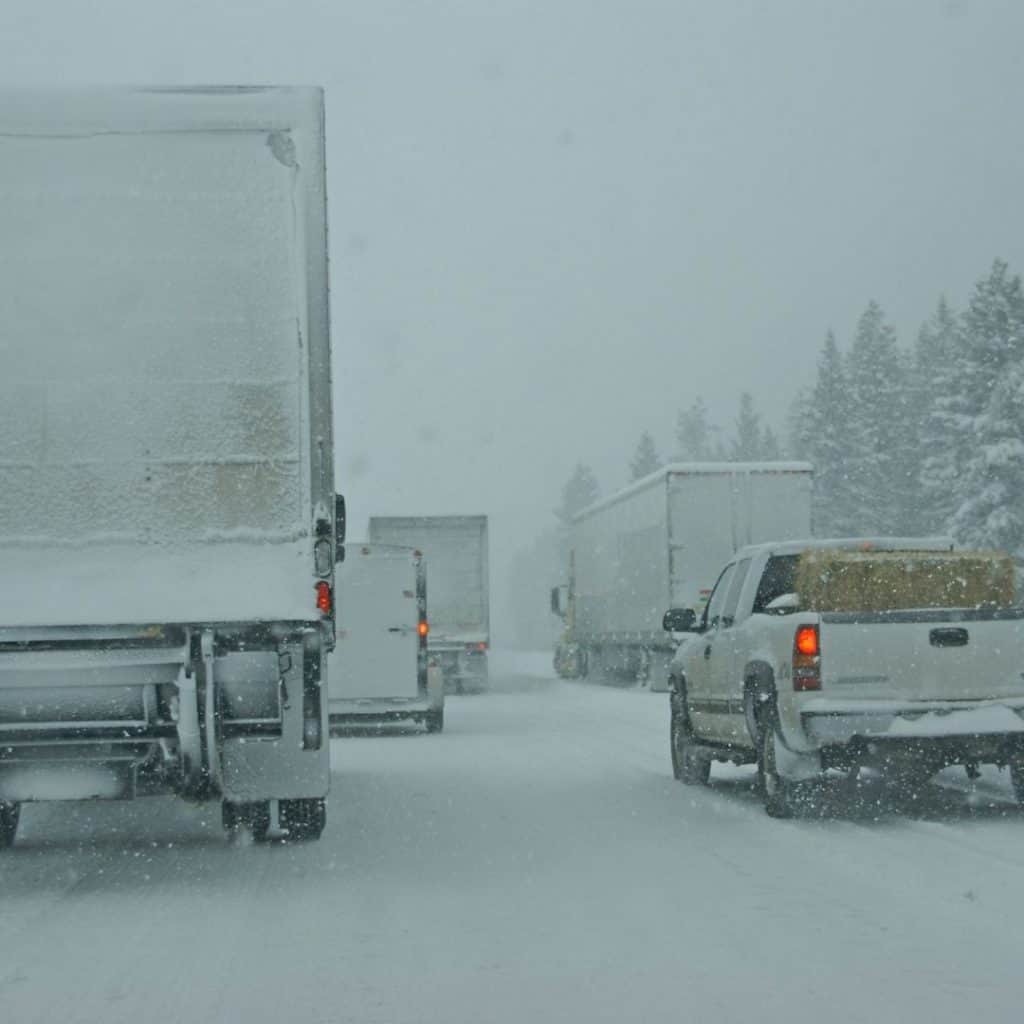If you bought it, a truck brought it! Trucks and their drivers are essential to our economy. Share the road safely.
A fully loaded tractor-trailer weighs up to 63,500 kg (140,000 lbs). An average passenger vehicle weighs 1,800 kg (4,000 lbs). That’s a huge weight differential to take on when a motorist does something unsafe on the road.
Professional drivers see it too often—motorists taking some pretty unsafe actions around commercial transport vehicles. Every year in BC, approximately 60 people are killed in traffic crashes between passenger vehicles and large commercial vehicles.
And every day, truck drivers see close calls. For example, motorists pass commercial trucks, then merge immediately in front of them. It’s unsafe to do this because these large trucks need extra room to stop or turn. A fully loaded transport truck travelling at 65 km/h (40 mph) takes 36 percent longer to brake and stop than a passenger car travelling at the same speed. A fully loaded transport truck travelling at 105 km/h (65 mph) takes 66 percent longer to brake and stop than a passenger car travelling at the same speed.
Studies in North America show that, in fatal car-truck crashes, the driver of the passenger vehicle is at fault in at least 60 percent of the incidents. Studies also show that, in collisions between cars and large trucks, the occupants of the passenger vehicle are at least four times more likely to be killed than the driver of the truck.

What does it take to operate a large commercial vehicle?
Few people know what it’s like to drive a large commercial vehicle. Motorists might change their perspective about sharing the road and their driving habits if they realized what it takes to operate a large commercial vehicle. The Be Truck Aware Alliance, a coalition of BC road safety stakeholders, offers this advice for passenger vehicle drivers:
• Leave space. Large trucks need extra room to stop and to turn. Don’t take away their turning or braking room.
• Don’t merge too soon. When passing a truck, make sure you can see both of its headlights in your rear-view mirror before merging back into the lane. If you merge too soon, the truck driver may not be able to see you or to stop in time to avoid a crash.
• Be visible around trucks. Either slow down or move well ahead of large trucks to stay out of the truck driver’s blind spots.
• Anticipate wide turns. Watch for trucks making wide swings to turn right. Never drive ahead in the right lane beside a turning truck.
Remember that trucks take longer to pull away from an intersection and to stop than a passenger vehicle. Be truck aware!